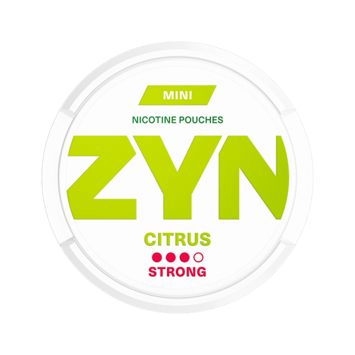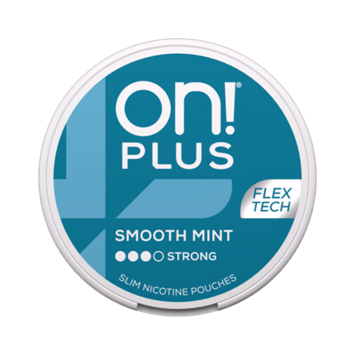What do nicotine pouches do?
Philip Plainstein

Have you heard about nicotine pouches? These small, discreet products have gained popularity in the UK and globally as a tobacco-free alternative for nicotine consumption. But how do they work, and what makes them different from traditional tobacco products?
Nicotine pouches are simple to use. You place a small pouch between your lip and gum, where the nicotine is absorbed through the oral mucosa. This method avoids the need for combustion, making them a potentially lower-risk option compared to smoking. They are often compared favourably to smoking in terms of reduced health risks.
Research suggests that nicotine pouches may offer a way to reduce harm for those seeking alternatives to traditional tobacco products. They contain nicotine, water, flavourings, and plant-based fibres, delivering nicotine without the combustion associated with smoking. However, their effectiveness as a smoking cessation tool is still under investigation.
For more information on how nicotine pouches work and their potential benefits, keep reading as we explore their effects, regulatory aspects, and more.
Understanding the Basics of Nicotine Pouches
Nicotine pouches are a modern, tobacco-free alternative designed to provide nicotine through the mouth. They are small, discreet, and easy to use, making them a popular choice for those seeking a smokeless option.
What are Nicotine Pouches?
Nicotine pouches are small, round or oval-shaped sachets placed between the upper lip and gum. They contain nicotine, water, microcrystalline cellulose, flavourings, and food-grade additives. These ingredients allow the nicotine to be absorbed through the oral mucosa without the need for combustion, unlike traditional tobacco products.
How They Differ from Traditional Tobacco Products
Unlike cigarettes or chewing tobacco, nicotine pouches do not contain tobacco leaves. This makes them a distinct option for those looking to avoid tobacco-related health risks. They share some similarities with snus, a Swedish smokeless tobacco product, but unlike snus, nicotine pouches are tobacco-free, potentially reducing exposure to harmful substances.
| Product | Tobacco Content | Nicotine Delivery | Health Considerations |
|---|---|---|---|
| Nicotine Pouches | No tobacco | Through oral mucosa | Lowers carcinogen exposure |
| Snus | Contains tobacco | Through oral mucosa | Higher health risks |
| Chewing Tobacco | Contains tobacco | Through chewing | Higher health risks |
These pouches come in various flavours, making them more appealing to users. Their design contributes to lower carcinogen exposure compared to smoking, and they are gaining popularity among smokers and those interested in harm reduction.
What do nicotine pouches do?
Nicotine pouches are designed to deliver nicotine through the mouth, offering a smoke-free and tobacco-free experience. When placed between the lip and gum, they release nicotine slowly.
Nicotine Delivery and Mechanism of Action
The nicotine is absorbed through the oral mucosa, the mucous membrane lining the inside of the mouth. This membrane is rich in blood vessels, allowing nicotine to enter the bloodstream efficiently.
Once absorbed, nicotine binds to nicotinic receptors in the brain. This binding triggers the release of dopamine, a neurotransmitter associated with pleasure and reward. This dopamine release can contribute to feelings of satisfaction and, over time, may lead to addiction.
In comparison to cigarettes, nicotine pouches deliver nicotine at a slower rate. This slower absorption results in lower peaks in nicotine levels, which can reduce certain health risks. Additionally, the slower delivery may lower the potential for abuse compared to cigarettes, where nicotine levels spike rapidly.
Nicotine pouches differ from nicotine gum and lozenges in their delivery method. While gum requires chewing to release nicotine, pouches are placed between the lip and gum for a steady release. This method is more discreet and doesn’t require frequent reapplication.
A typical nicotine pouch contains between 2mg to 12mg of nicotine, depending on the brand. This range allows users to choose a strength that suits their needs, whether they are a light or heavy user. For example, ZYN offers options from 3mg to 6mg, while other brands like On! provide higher concentrations up to 12mg.
The slower nicotine delivery of pouches leads to lower peaks in blood nicotine levels compared to smoking. This can potentially reduce health risks associated with high nicotine spikes, such as increased heart rate and blood pressure. However, it’s important to note that while pouches may pose fewer risks than smoking, they are not without health considerations.
Research indicates that nicotine pouches can be an effective tool for those seeking to reduce their nicotine intake or transition away from smoking. Their popularity has grown as a harm reduction product, offering a convenient and discreet alternative to traditional tobacco products.
Potential Health Effects of Using Nicotine Pouches
Nicotine pouches, while considered a lower-risk alternative to smoking, come with their own set of health considerations. Understanding these effects is crucial for making informed decisions about their use.
Oral Health Considerations for You
One of the primary concerns is the impact on oral health. Placing a nicotine pouch between your lip and gum can cause localized irritation. This may lead to gum inflammation and, in some cases, gingival recession. Additionally, the prolonged presence of the pouch can result in mouth ulcers and temporary soreness. These issues are more pronounced in the area where the pouch is held, as the ingredients can disrupt the natural balance of your mouth.
While nicotine itself is not a carcinogen, the combination of nicotine and other ingredients can reduce saliva production. This reduction can increase the risk of tooth decay and other dental problems. It’s essential to maintain good oral hygiene habits to mitigate these risks.
General Health Risk Factors
Despite the absence of tobacco combustion, which significantly lowers carcinogen exposure compared to smoking, nicotine pouches pose general health risks. The cardiovascular system can be affected, as nicotine increases heart rate and blood pressure. These effects are part of the broader systemic impacts that require consideration.
Long-term use of nicotine pouches may mirror the effects seen with other orally administered nicotine products, such as those used in smoking cessation. However, the long-term health effects remain largely inconclusive, and more research is needed to fully understand both oral and general health risks.
It’s important to weigh these health factors when choosing nicotine pouches. While they offer a harm reduction benefit compared to smoking, the unknown long-term data mean that caution is advised.
Nicotine Pouches in Smoking Cessation and Harm Reduction
Nicotine pouches are gaining traction as a tool for smoking cessation and harm reduction. They offer a tobacco-free alternative, which makes them an attractive option for those looking to quit smoking.
Comparisons with Cigarettes, Gum, and E-Cigarettes
Nicotine pouches differ significantly from traditional cigarettes. They deliver nicotine without combustion, reducing harmful chemicals. Compared to nicotine gum, they offer a more discreet and steady release without the need for chewing.
E-cigarettes, on the other hand, involve inhalation, which may not appeal to everyone. Nicotine pouches provide a smokeless, spill-free experience, making them a unique choice.
| Product | Tobacco Content | Nicotine Delivery | Health Considerations |
|---|---|---|---|
| Nicotine Pouches | No tobacco | Through oral mucosa | Lower carcinogen exposure |
| Cigarettes | Contains tobacco | Through inhalation | Higher health risks |
| Nicotine Gum | No tobacco | Through chewing | Temporary mouth soreness |
| E-Cigarettes | No tobacco | Through inhalation | Respiratory concerns |
User Experience and Satisfaction
Users often praise the variety of flavours and ease of use of nicotine pouches. They find them more convenient than gum or lozenges. However, some report that the craving relief is less intense compared to traditional methods.
The absence of tobacco combustion strengthens their position as a harm reduction tool. Despite this, user feedback varies, and more research is needed to confirm long-term benefits.
When considering cessation aids, it’s wise to assess personal needs and seek advice from healthcare professionals to make an informed decision.
Legislative and Regulatory Framework in the United Kingdom
The regulation of nicotine pouches in the UK is a topic of growing interest as their popularity increases. Understanding the current framework and potential future changes is essential for consumers and stakeholders alike.
Current UK Regulations and Guidelines
Nicotine pouches are currently regulated under the General Product Safety Regulations (GPSR) in the UK. These regulations ensure that products are safe for consumers. Unlike e-cigarettes and traditional tobacco products, nicotine pouches do not fall under the Tobacco and Related Product Regulations. This means they are not subject to the same strict guidelines, such as nicotine strength limits or packaging restrictions. The Medicines and Healthcare Regulatory Agency (MHRA) does not classify them as medicinal products, which would require a different regulatory approach.
Future Regulatory Prospects
As nicotine pouches gain more attention, there may be changes in how they are regulated. Groups like Action on Smoking and Health (ASH) have raised concerns about their potential risks, particularly regarding access by young people and the lack of nicotine strength limits. The UK government has shown interest in updating regulations to address these concerns. For example, the Tobacco and Vapes Bill could bring new rules for these products.
While the current regulatory framework provides some oversight, future changes may align more closely with those for e-cigarettes and traditional tobacco products. Staying informed about these developments will help ensure safe and responsible use of nicotine pouches.
Final Thoughts on Nicotine Pouches
Nicotine pouches present a contemporary, tobacco-free method of nicotine delivery, offering a distinct alternative to traditional smoking. They provide a smoke-free experience, which may appeal to those seeking to reduce their exposure to harmful combustion products. These pouches have gained popularity as a potential tool for smoking cessation, though their long-term effects remain under investigation.
While they offer several advantages, such as reduced carcinogen exposure and a discreet usage experience, there are limitations to consider. Current research highlights concerns about oral health impacts and the potential for nicotine dependence. The regulatory landscape in the UK is evolving, with ongoing discussions about future controls to ensure consumer safety.
As the market continues to develop, it is crucial to stay informed about emerging data and regulatory changes. Nicotine pouches may offer a harm reduction benefit, but they are not without risks. Balancing their potential benefits with careful consideration of these risks is essential for making informed decisions about their use.









